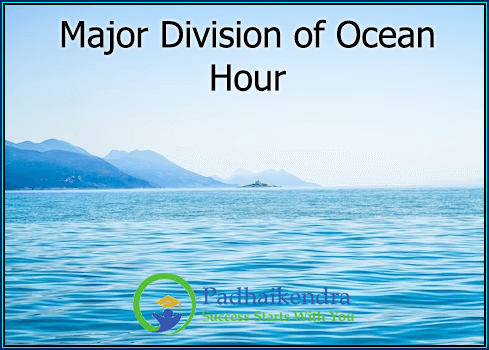Oceanography is the study of the physical, chemical, and biological aspects of the world’s oceans. It is a multidisciplinary field that encompasses a wide range of scientific disciplines, including geology, biology, chemistry, and physics. Understanding the complex and dynamic nature of the world’s oceans is essential for predicting and managing the impacts of natural disasters like tsunamis, hurricanes, and ocean pollution.
Major Division of Ocean Hour
The major division of the ocean is based on their location and size, and they are typically classified into five main oceans:
- Pacific Ocean: This is the largest and deepest ocean, covering approximately one-third of the Earth’s surface. It stretches from the Arctic Ocean in the north to the Southern Ocean in the south and is bounded by Asia and Australia to the west and the Americas to the east.
- Atlantic Ocean: This is the second-largest ocean and is located between the Americas to the west and Europe and Africa to the east. It is connected to the Arctic Ocean in the north and the Southern Ocean in the south.
- Indian Ocean: This is the third-largest ocean and is located between Africa, Asia, Australia, and the Indian subcontinent. It is bounded by the Atlantic Ocean to the west and the Pacific Ocean to the east.
- Southern Ocean: This is the smallest and the youngest of the five oceans and surrounds the continent of Antarctica. It is also known as the Antarctic Ocean.
- Arctic Ocean: This is the smallest and shallowest of the five oceans and is located around the North Pole. It is connected to the Atlantic Ocean by the Greenland Sea and the Norwegian Sea and to the Pacific Ocean by the Bering Strait.





